- Top
- Kumamoto University URA Office
- Press Release
KU - URA Office
Click on the images to go to the full release.
2021 – 2020 – 2019 – 2018 – 2017 – 2016
-
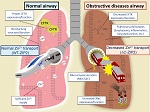
Defect in zinc supply mechanism affects pathology of intractable pulmonary diseases
28-Dec-2017
Prof. Hirofumi Kai: Faculty of Life Sciences (Medicine)In breakthrough work, Kumamoto University researchers have now made it clear that abnormalities of the ion channels ENaC and CFTR reduce the body's ability to deliver zinc ions (Zn2+) to lung epithelial cells.
-
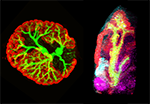
Reproducing higher-order embryonic kidney structures using pluripotent stem cells
18-Dec-2017
Prof. Ryuichi Nishinakamura: Institute of Molecular Embryology and Genetics (IMEG)A Kumamoto University research group has developed a method of using PSCs to induce production of ureteric buds, the progenitors of branched collecting ducts, and has succeeded in reproducing the higher-order structure of the kidney.
-

MWA radio telescope expansion complete -- Exploration of the universe's first stars begins
12-Dec-2017
Assoc. Prof. Keitaro Takahashi: Graduate School of Science and Technology (Engineering)The Murchison Widefield Array (MWA) radio telescope is an international radio-astronomy project conducted by seven countries including Japan and Australia. It will seek answers to mysteries of the universe that began 13.7 billion years ago.
-

Refrigeration technology to maintain cold-stored mouse sperm viability for 10 days
4-Dec-2017
Assist. Prof. Toru Takeo: Institute of Resource Development and AnalysisA Kumamoto University research team has succeeded in developing a refrigeration preservation technology that maintains the fertilization functionality of mouse sperm for 10 days--over three times the previous time limit.
-

Preliminary stages of dementia reduce human face memorization ability
21-Nov-2017
Prof. Emeritus Kaoru Sekiyama: Faculty of Letters (Psychology)A Japanese research group has revealed that elderly people with mild cognitive impairment (MCI) have a particularly weakened ability to memorize human faces in the short term when compared to healthy elderly people. MCI patients also had a different gaze behavior when trying to memorize a face. This research may lead to the early detection of dementia.
-
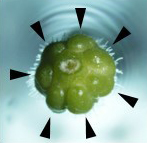
New bioresources for plant peptide hormones using gene editing technology
8-Nov-2017
Assist. Prof. Ishida Takashi: International Research Org. for Adv. Science and Technology (IROAST)Using genome editing technology, researchers from Kumamoto University generated a new, comprehensive genetic resource collection of plants with knocked out CLE peptides-encoding genes. CLE peptides are a group of plant-specific peptide hormones that play a role in cell signaling and are regulated by CLE genes.
-
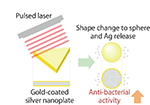
Nanoparticles with pulse laser controlled antibacterial properties
26-Oct-2017
Prof. Takuro Niidome: Graduate School of Science and Technology (Chemistry)When gold-coated silver nanoplates are irradiated with a pulsed laser, they change shape into a sphere and release silver ions which produces a strong antibacterial effect.
-

Pressure between layers of stacked graphene oxide nanosheets increases with heat
2-Oct-2017
Assit. Prof. Ryo Ohtani: Graduate School of Science and Technology (Engineering)A research group from Kumamoto University has discovered that pressure can be generated by simply stacking graphene oxide nanosheets, a material that closely resembles graphene.
-

New drug protects heart from cardiac rupture after myocardial infarction
2-Oct-2017
Assoc. Prof. Koichi Kaikita: Kumamoto University HospitalKumamoto University researchers have found that a new drug, LCZ696, can prevent cardiac rupture and heart failure following acute myocardial infarction which is one of the causes of chronic heart failure.
-

A new method for removing cells infected with the AIDS virus
2-Oct-2017
Assoc. Prof. Mikako Fujita: Faculty of Life Sciences (Pharmaceutical Sciences)Kumamoto University researchers have developed a new compound that is key to the destruction of HIV. When the compound is introduced into infected cells, viral budding (release) is suppressed thereby confining it within the host cells. The cells then die naturally through apoptosis (cell death). This treatment is believed to lead to the complete recovery from AIDS in the near future.
-
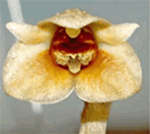
Development of an artificial orchid cultivation kit
21-Sep-2017
Prof. Shinichiro Sawa: Graduate School of Science and Technology (Biology)Orchids are loved by gardeners around the world but are notoriously difficult to cultivate. Japanese researchers have developed a new orchid cultivation kit that allows seed germination, flowering, and fruiting, and have succeeded in the complete artificial cultivation of an autonomous orchid.
-
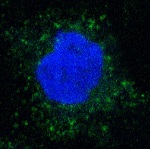
Small intestine permeable peptides facilitate digestive tract absorption
20-Sep-2017
Assoc. Prof. Shingo Ito: Faculty of Life Sciences (Pharmaceutical Sciences)Kumamoto University researchers have found a new small intestine permeable peptide that can facilitate digestive tract absorption of biopharmaceutical products. The discovery is expected to contribute greatly to the development of orally administered drugs.
-

Incidence of acute myocardial infarction may increase the day after Asian dust exposure
10-Sep-2017
Assoc. Prof. Sunao Kojima: Kumamoto University HospitalA recent environmental epidemiological study by Japanese researchers has shown that Asian sand particles blown to Japan from desert areas of the Asian continent are associated with the onset of myocardial infarction.
-
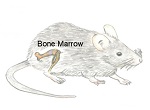
Bacterial infection stresses hematopoietic stem cells
23-Aug-2017
Dr. Hitoshi Takizawa: International Research Center for Medical Sciences (IRCMS)Infection-induced hematopoietic stem cell stress may lead to anemia or leukemia
-
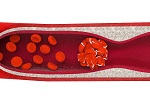
Anticoagulants used for arrhythmia can have different thrombus formation rates
23-Aug-2017
Dr. Koichi Kaikita: Kumamoto University HospitalKumamoto researchers examined several types of anticoagulants and found that the rates of thrombus formation are different according to the type of drug. This difference may be related to the risk of side effects, especially intracranial bleeding.
-
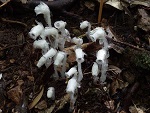
Cockroach gardeners: Spreading plant seeds across the forest floor
2-Aug-2017
Assoc. Prof. Naoto Sugiura: Graduate School of Science and TechnologyIn forest ecosystems, cockroaches are known as important decomposers that consume dead and decaying plants. Quite unexpectedly, however, researchers have found that they also provide seed dispersal services for the plant Monotropastrum humile, a forest-floor herb belonging to the azalea family (Ericaceae).
-
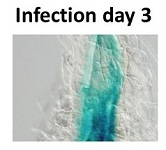
Parasitic worms may lead to agricultural stem cell breakthrough
18-Jul-2017
Prof. Shinichiro Sawa: Graduate School of Science and TechnologyKumamoto researchers showed that plant parasitic nematodes are able to effectively manipulate plant stem cells to make their nests (galls) in plant roots.
-

Ancient Greek theaters used moveable stages more than 2,000 years ago
11-Jul-2017
Dr. Ryuichi Yoshitake: Priority Organization for Innovation and Excellence (POIE)An investigation by an architectural researcher from Kumamoto University, Japan has revealed the high possibility that a wooden stage existed in the theater of the ancient Greek City of Messene during the Greek Classical period (ca. 369 BC).
-
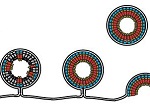
Ancient retrovirus embedded in the human genome helps fight HIV-1 infection
27-Jun-2017
Assist. Prof. Kazuaki Monde: Faculty of Life SciencesPrevious research from Kumamoto University in Japan revealed an apparent correlation between the coassembly of HIV-1 group specific antigen (Gag) and HERV-K Gag, and the reduced particle proliferation and infectivity of HIV-1. In their current study, the researchers sought to clarify how HERV-K Gag affects HIV-1 in this manner.
-

New catalytic converter composite reduces rare earth element usage
2-Jun-2017
Prof. Masato Machida: Graduate School of Science and Technology (Chemistry)Professor Masato Machida of Kumamoto University has been researching ways to reduce the amount of Cerium used in catalytic converters and even find an alternative material to replace it.
-

New theory predicts wetted area of droplets colliding with flat surface
24-May-2017
Assoc. Prof. Yukihiro Yonemoto: Priority Organization for Innovation and Excellence (POIE)Japanese researchers have succeeded in deriving a theoretical formula that quantitatively predicts the wetting and spreading behavior of droplets that collide with the flat surface of a solid material.
-
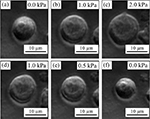
Microdevice provides novel method of measuring cell mechanical properties
10-May-2017
Assoc. Prof. Yuta Nakashima: Graduate School of Science and Technology (Engineering)Researchers from Kumamoto University created a new device to easily evaluate the mechanical properties of cells. Their cell compression microdevice is cheaper and easier to use than other tools. It uses a very thin and soft diaphragm for cell compression making it minimally invasive, and it allows for real-time observation of cell compression.
-
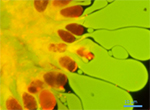
Fast, low energy, and continuous biofuel extraction from microalgae
28-Apr-2017
Prof. Hamid Hosano: Institute of Pulsed Power ScienceKumamoto University researchers used a nanosecond pulsed electric field (nsPEF) to focus on the microalgae matrix, instead of cells, to reduce the cost of biodiesel. A nsPEF generally uses less energy than μs/msPEFs, even at high voltages, and is not as destructive or costly as the traditional drying method of oil extraction.
-
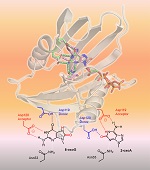
Mechanism for hMTH1's broad substrate specificity revealed
29-Mar-2017
Prof. Yuriko Yamagata: Pharmaceutical SciencesScientists from Kumamoto University, the National Institutes for Quantum and Radiological Science and Technology, and Kyushu University performed structural and kinetic analyses on hMTH1 to determine the mechanisms behind its ability to hydrolyze various oxidized mutagenic dNTPs, such as 8-oxo-dGTP and 2-oxo-dATP, with similar efficiency.
-
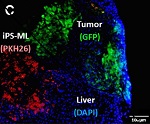
Interferon-beta producing stem cell-derived immune cell therapy on liver cancer
28-Mar-2017
Assoc. Prof. Satoru Senju: Faculty of Life ScienceHoping to improve primary liver cancer including HCC and metastatic liver cancer therapies, researchers from Japan began studying induced pluripotent stem (iPS) cell-derived immune cells that produced the protein interferon-β (IFN-β).
-
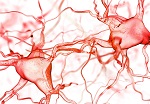
Epigenetic program leading to vessel differentiation -
19-Mar-2017
Identification of histone and transcriptional regulation in vessel differentiation
Prof. Takashi Minami: Institute of Resource Development & Analysis (IRDA)A collaborative research group from Kumamoto University, Kyoto University, and the University of Tokyo in Japan investigated the changes in gene functions that occur when stem cells become vascular cells. They found that the histone code, which alters the transcriptional state of the gene, changes over time as stem cells differentiate into blood vessels in response to a stimulus.
-
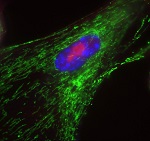
Cellular senescence prevented by the SETD8 enzyme
8-Mar-2017
Prof. Mitsuyoshi Nakao: Institute of Molecular Embryology and Genetics (IMEG)An enzyme that blocks cellular senescence and its mechanisms has been discovered by a research team from Kumamoto University, Japan. They found that a reduction of the enzyme SETD8, which regulates cell proliferation and gene function, results in the promotion of cell aging features.
-

A sustained and controllable insulin release system
27-Feb-2017
Prof. Hidetoshi Arima: Pharmaceutical SciencesWorking toward the development of a better insulin delivery system, a research group from Kumamoto University in Japan has been experimenting with polyethylene glycol (PEG) modification (PEGylation) of protein drugs through a host-guest interaction between cyclodextrin (CyD) and adamantane to improve the stability and lifetime of insulin, calling the results of their work "SPRA technology".
-

Discovery of a novel chromosome segregation mechanism during cell division
24-Feb-2017
Prof. Tokio Tani: Graduate School of Science & Technology
Joint research between Kumamoto University, Osaka University, and the National Institute for Basic Biology in Japan used fission yeast to show that some RNA sequences called "introns" promote heterochromatin structure formation.
-
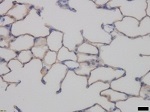
High indoxyl sulfate levels caused by acute kidney injury damages lungs
22-Feb-2017
Prof. Hideyuki Saito: Kumamoto University Hospital
Researchers have found a mechanism that causes acute lung damage during instances of sudden kidney failure. Indoxyl sulfate (IS) accumulates in organs of the body when the kidney is damaged and reduces the ability of lung cells to transport water and salt across their membranes. This discovery may lead to better treatment of a disease with a high mortality rate.
-
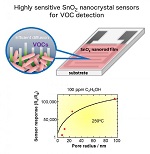
Highly sensitive gas sensors for volatile organic compound detection
1-Feb-2017
Prof. Tetsuya Kida: Faculty of Advanced Science and Technology
A collaboration of researchers in Japan has developed a sensor for volatile organic compound (VOC) detection. Their manufacturing method allows for fine-tuning of SnO2 nanocrystal and pore sizes. Experiments found that a dramatic increase in sensitivity was realized by Pd-loading the sensors. The highly sensitive devices may have a practical use detecting specific biomarkers for medical diagnostics.
-
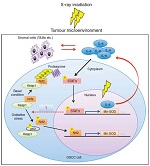
Reducing the radioresistance of cancer
13-Jan-2017
Prof. Hideki Nakayama: Faculty of Life Science
Researchers have discovered that some cancer cells are protected from radiation therapy through an interaction of interleukin-6 with the Nrf2-antioxidant pathway. The discovery is believed to improve methods of increasing cancer’s radiosensitivity.
-

Historical documents reveal evidence of Japanese winemaking 400-year ago
6-Jan-2017
Prof. Tsuguharu Inaba: Eisei-Bunko Research Center
The history of wine in Japan is short, with full scale brewing beginning only 150 years ago. However, 400-year old historical documents found by the Eisei-Bunko Research Center of Kumamoto University, Japan show that a lord on the most southern of the four main islands of Japan ordered his people to begin winemaking.














